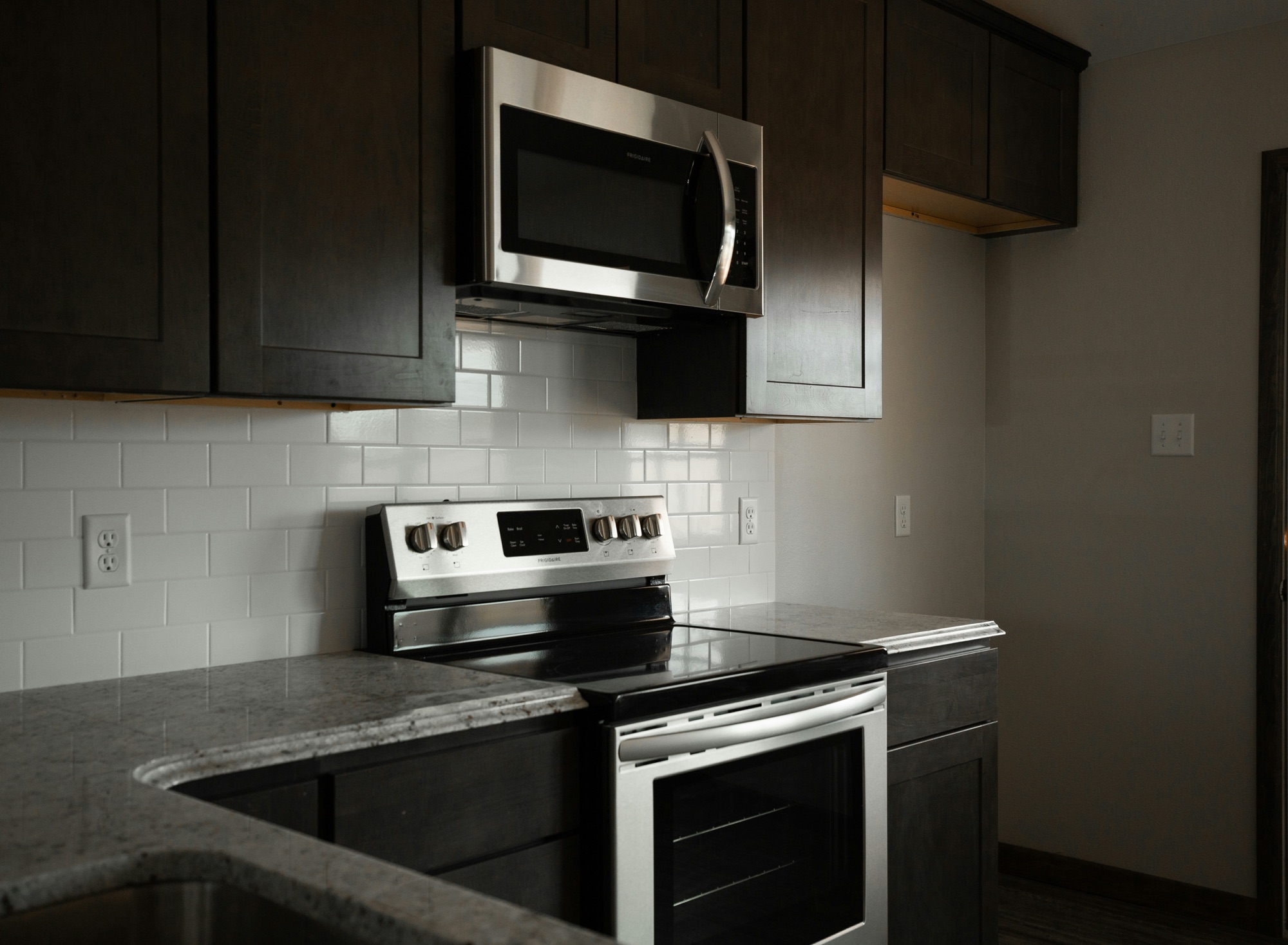Microwaves have become a staple in modern kitchens due to their convenience and efficiency. They offer a quick way to heat and cook food, making them ideal for busy lifestyles. However, questions about the safety of using a microwave for all cooking often arise, particularly around concerns of radiation, nutrient loss, and potential hazards from using certain types of containers. While microwaves are generally safe and effective for many types of cooking, it’s important to understand their limitations, best practices, and any potential risks.
1. How Do Microwaves Work?
To understand the safety of using microwaves for all cooking, it helps to know how they work. Microwave ovens use electromagnetic radiation to heat food. The microwaves generated by the appliance cause water molecules in the food to vibrate, producing heat that cooks the food. Because the microwaves directly heat the water and fats in food, cooking times are significantly shorter than with conventional ovens.
Microwaves are designed to prevent the radiation from escaping the appliance, making them safe when used properly. However, whether it is safe or effective to rely on a microwave for all your cooking depends on several factors, including the type of food, the method of cooking, and the containers used.
2. Is Microwave Radiation Safe?
One common concern is whether the radiation emitted by microwaves is harmful. Microwave ovens use non-ionizing radiation, which means the radiation is not strong enough to cause damage to DNA or cells, unlike ionizing radiation from X-rays or UV rays. The radiation produced in microwaves is limited to the interior of the appliance and is absorbed by food, not the user. Modern microwaves are built with safety features, such as door seals, to prevent radiation leakage.
As long as the microwave is in good working condition and used according to the manufacturer’s instructions, the radiation it emits is not harmful to humans. Regular maintenance, such as ensuring the door seals are intact and that there are no cracks in the door, will keep the microwave functioning safely.
3. Nutrient Retention in Microwave Cooking
Does Microwaving Destroy Nutrients?
A common belief is that microwaving food destroys more nutrients than other cooking methods. In reality, microwaving can actually preserve more nutrients in certain foods compared to other methods like boiling or frying, because it cooks food faster and uses less water. Vitamins such as vitamin C and B vitamins, which are water-soluble and sensitive to heat, can be better preserved when microwaving due to shorter cooking times and minimal water usage.
For example, microwaving vegetables with minimal water can retain more vitamins and minerals compared to boiling, where nutrients can leach into the cooking water. Steaming in the microwave, where food is cooked with its own moisture, is an especially effective way to retain nutrients.
Overcooking and Nutrient Loss
The key to preserving nutrients when using a microwave is to avoid overcooking. Just like with any cooking method, excessive heat and time can break down the nutrients in food. To maximize nutrient retention, use shorter cooking times and check food periodically to prevent overcooking.
4. Is It Safe to Use a Microwave for All Types of Food?
Cooking Raw Meat and Poultry in the Microwave
Cooking raw meat and poultry in a microwave can be safe, but there are important safety guidelines to follow. Microwaves can cook unevenly, meaning certain parts of the meat may not reach a high enough temperature to kill harmful bacteria such as Salmonella or E. coli. This can increase the risk of foodborne illness if the meat is not cooked thoroughly.
To safely cook meat in the microwave, it’s essential to:
- Use a microwave-safe thermometer to ensure the internal temperature of the meat reaches a safe level (165°F or 74°C for poultry, 160°F or 71°C for ground meats).
- Cover the food to trap steam and ensure more even cooking.
- Stir or rotate the food halfway through the cooking process to avoid cold spots where bacteria may survive.
While microwaving can work for small cuts of meat or reheating pre-cooked items, it may not be the best option for large cuts or dishes that require uniform cooking throughout.
Reheating Leftovers and Pre-Cooked Foods
Microwaves are commonly used for reheating leftovers, and this is generally safe as long as the food is heated thoroughly. However, reheating certain foods, like rice or eggs, can pose food safety risks if not done correctly. Leftovers should always be reheated to an internal temperature of 165°F (74°C) to kill any bacteria that may have developed during storage.
When reheating, it’s a good idea to:
- Stir the food during cooking to distribute heat evenly.
- Allow it to rest after microwaving to let the heat continue cooking the food internally.
Microwaving Frozen Food
Microwaving frozen food is convenient, but there are some considerations to ensure safety and quality. For example, foods like frozen vegetables are safe to microwave, but frozen raw meats may not cook evenly if microwaved directly from frozen, which could leave some parts undercooked and pose a safety risk. It is generally safer to thaw raw meat in the refrigerator before cooking it in the microwave.
5. Safe Use of Containers in the Microwave
Microwave-Safe Containers
One of the primary safety concerns with microwave cooking is the type of container used. Not all materials are microwave-safe, and using the wrong containers can lead to the release of harmful chemicals or cause damage to the microwave.
- Glass and ceramic containers: These are typically safe for microwave use, as they do not release harmful substances when heated. Ensure that the container is labeled as microwave-safe.
- Plastic containers: Only use plastic containers labeled as microwave-safe. Some plastics, especially those that contain BPA or phthalates, can leach harmful chemicals into food when heated. Using microwave-safe plastics or avoiding plastic altogether is a safer option.
- Metal: Never use metal containers or utensils in the microwave. Metal can cause sparks and even fires, potentially damaging the microwave and posing safety hazards.
- Paper products: Plain paper towels, wax paper, and parchment paper are generally safe to use, but avoid using printed paper products, which can contain inks or dyes that are unsafe when heated.
Covering Food in the Microwave
When cooking in the microwave, covering food with a microwave-safe lid or vented cover is important to prevent splattering and ensure even cooking. Using plastic wrap should be done with caution, as not all plastic wraps are microwave-safe. If using plastic wrap, ensure it does not come into direct contact with the food, as high heat can cause the wrap to melt.
6. Limitations of Microwave Cooking
Lack of Browning or Crisping
Microwaves are great for heating and cooking food quickly, but they do not brown or crisp food as conventional ovens or stovetops do. This can be a limitation if you’re looking to achieve certain textures, such as crispy skin on chicken or caramelization on roasted vegetables. For dishes that require browning, finishing them in an oven or on a stovetop after microwaving can provide the desired result.
Uneven Cooking
Microwaves heat food from the outside in, and depending on the shape and composition of the food, this can result in uneven cooking. Certain areas may become overcooked while others remain cold. To avoid this, it’s important to stir or rotate food during microwaving, especially when cooking larger portions or dishes with varied ingredients.
Conclusion
Microwaves are safe for many types of cooking and offer a convenient way to prepare and reheat food quickly. However, they are not ideal for all types of cooking, particularly when it comes to achieving even cooking for large cuts of meat or achieving certain textures like browning. While microwaving is safe when used properly, it’s important to follow best practices such as using microwave-safe containers, ensuring even cooking, and using a food thermometer when cooking raw meat or poultry.
For optimal results, it’s often best to use the microwave in combination with other cooking methods, especially for tasks like browning, crisping, or slow cooking. As long as safety guidelines are followed, the microwave remains a valuable tool in the kitchen for a wide range of tasks.




